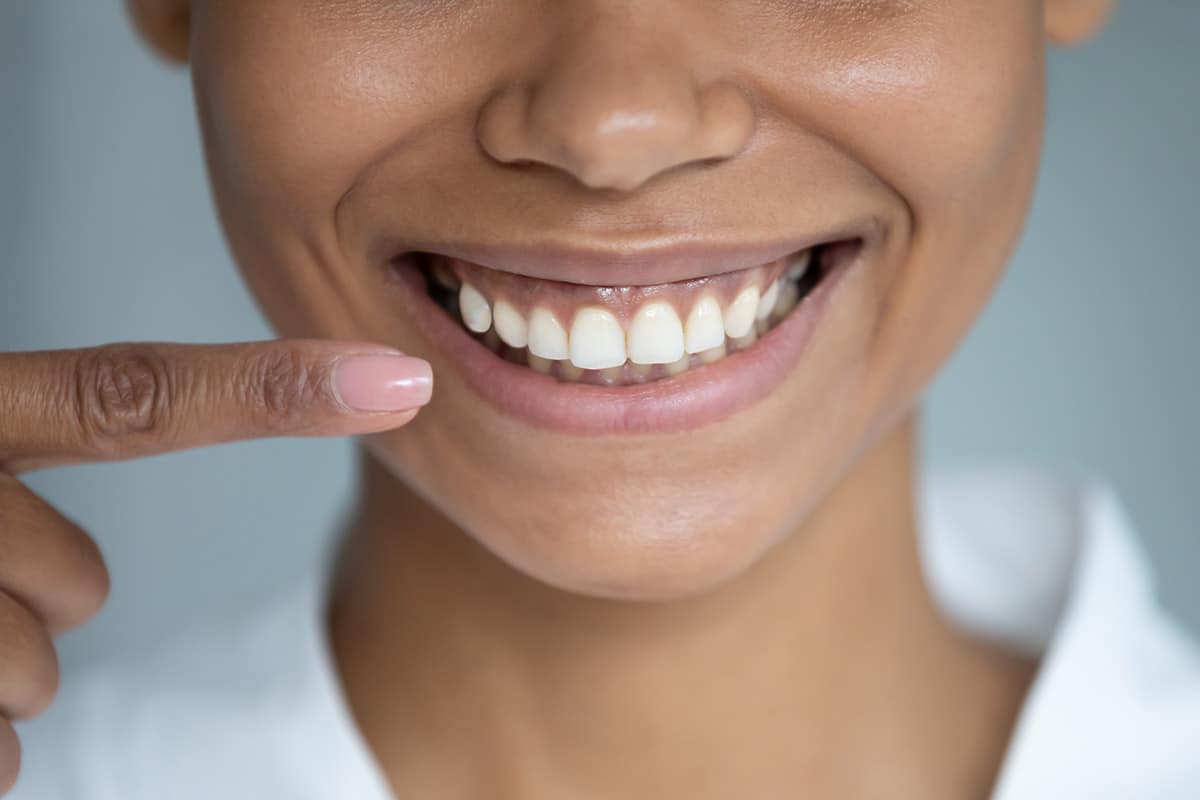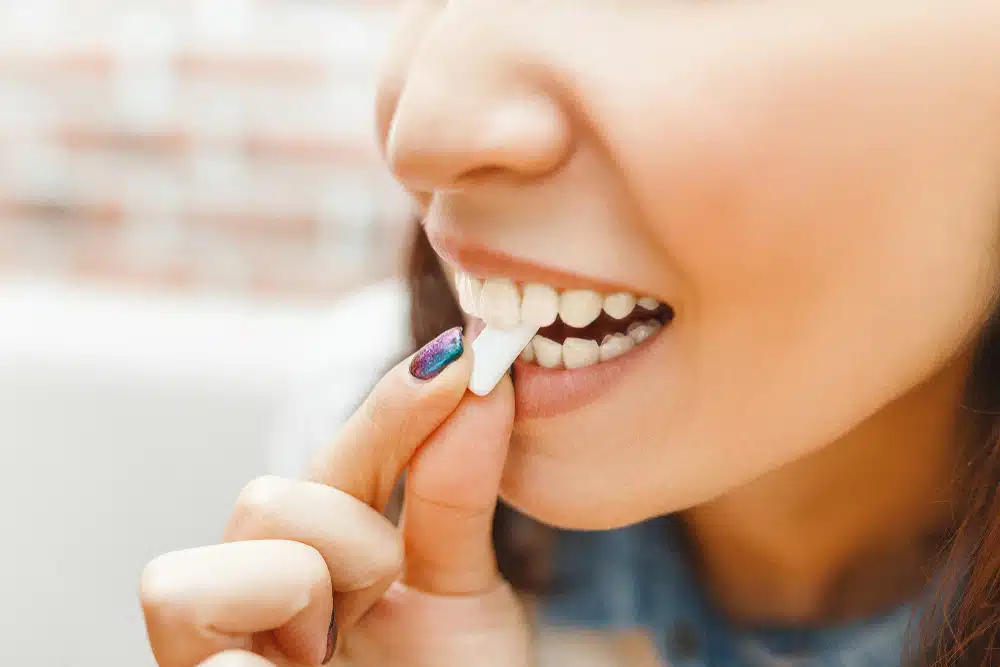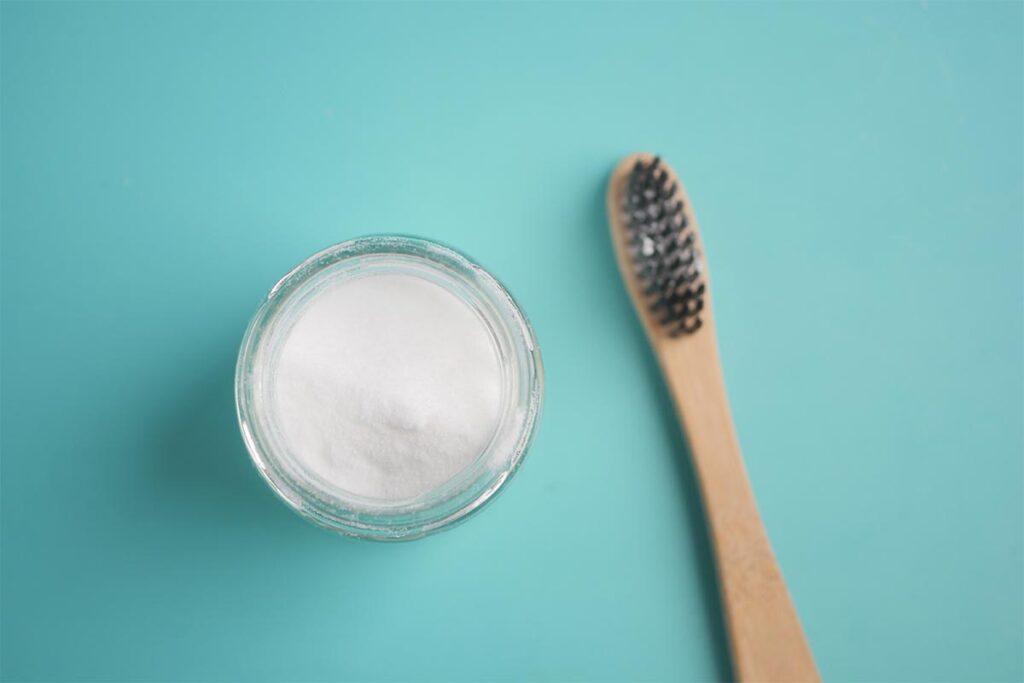
Have you ever wondered if chewing gum could actually make your teeth whiter? With so many dental products flooding the market, it’s only natural to question whether something as simple and convenient as gum could help you achieve a brighter smile.
In recent years, teeth-whitening gum has gained popularity among those seeking quick, on-the-go oral care solutions. But does it really work—or is it just clever marketing? Let’s explore the truth behind whitening gum and what you need to know to make informed choices for your smile.
The Effectiveness of Teeth Whitening Gum: Does it Really Work?
Yes, teeth-whitening gum can contribute to a whiter smile, but with limitations. These gums usually contain mild abrasives or ingredients like xylitol and baking soda that help scrub away surface stains. While they can help maintain whiteness and provide a cleaner look, they’re not nearly as effective as professional teeth-whitening treatments. For those seeking dramatic or long-lasting results, expert solutions remain the gold standard—let’s take a closer look at how whitening gum actually works.
How Does Teeth-Whitening Gum Work?
Whitening gum relies on both mechanical and chemical actions to help brighten your smile. On the mechanical side, chewing gum increases saliva production, which aids in washing away food particles and reducing plaque buildup. The physical act of chewing also provides a mild abrasive effect that gently scrubs away surface stains.
Chemically, whitening gums often include active ingredients such as calcium peroxide and baking soda. Calcium peroxide releases oxygen molecules that penetrate the enamel to lift stains, while baking soda offers a gentle abrasive quality and helps neutralize acids in the mouth.

Xylitol, a natural sweetener frequently included in whitening gum, supports oral health by preventing tooth decay and inhibiting the growth of cavity-causing bacteria.
Oral Health Benefits of Whitening Gum
While whitening gum is mainly marketed for its cosmetic benefits, it also offers a number of advantages for your overall oral health. Beyond its stain-fighting abilities, the regular use of whitening gum can help support a cleaner, healthier mouth. Let’s explore some of the lesser-known yet highly beneficial effects of chewing whitening gum.
Prevents Tooth Decay
Research published in the Journal of Oral Science found that chewing xylitol-sweetened gum significantly reduced oral bacteria levels shortly after use. The American Dental Association (ADA) also supports the use of sugar-free gum after meals, noting it can lower the risk of cavities by helping clear food debris and bacteria from teeth until you’re able to brush. This simple habit can serve as an effective complement to your daily oral hygiene routine.
Increases Saliva Production
Chewing gum naturally stimulates your salivary glands, leading to increased saliva flow—a key factor in maintaining oral health. For those who suffer from dry mouth, this can offer significant relief, as saliva helps with essential functions like speaking, eating, and swallowing. The motion of chewing activates jaw muscles that press against the salivary glands, triggering saliva release. This not only soothes dryness but also aids in rinsing away food particles and neutralizing harmful acids in the mouth.
Prevents Bad Breath
From garlic-laden meals to morning breath, unpleasant odors in the mouth are something everyone deals with from time to time. While flavored chewing gum won’t cure underlying issues like gum disease or chronic dry mouth, it can offer quick and effective breath freshening. The burst of minty flavor in sugar-free gum helps mask odors, while increased saliva flow aids in flushing out lingering food particles and bacteria responsible for the smell.
Relieves Stress
Beyond oral health, chewing gum may also offer emotional benefits—particularly when it comes to managing stress. A study published in the Journal of Clinical and Translational Research found that participants who chewed gum regularly reported lower levels of stress compared to non-chewers. The repetitive motion of chewing can have a calming effect, making it a simple yet effective tool for coping with daily tension or anxiety.
Other Gum Lightening Treatments
While whitening gum can help maintain a brighter smile, it’s not your only option when it comes to improving tooth color. Professional whitening treatments go deeper, addressing stubborn stains and delivering more dramatic, long-lasting results. If you’re looking for a noticeable upgrade, here are two trusted treatments worth considering.
The KÖR Whitening Treatment
KÖR Whitening is a professional-grade system known for its ability to brighten teeth by up to 16 shades in just two weeks. Using a powerful peroxide-based formula, KÖR penetrates deep into the enamel to eliminate even the most stubborn stains. Dr. Gallardo’s office offers four customized treatment options, ranging from simple at-home kits to advanced protocols for severe discoloration caused by aging or tetracycline. Whether you’re looking for a subtle lift or dramatic whitening, KÖR delivers long-lasting results tailored to your specific needs.
Philips Zoom! Teeth Whitening
Philips Zoom! is an in-office whitening treatment that can brighten teeth by several shades in just one visit, often in under an hour. It uses a specially formulated hydrogen peroxide gel that’s activated by an LED light, allowing it to effectively break down tough stains from coffee, tea, wine, and smoking. This effective option offers customizable intensity levels to match your comfort and sensitivity. It’s a fast, safe, and efficient way to achieve immediate, long-lasting results with minimal disruption to your daily routine.

How to Keep Your Teeth White at Home
Maintaining a bright smile isn’t just about what treatments you choose—it’s also about the daily habits you build. Simple, consistent practices can go a long way in preserving your teeth’s natural whiteness and preventing new stains from forming. Here are some effective at-home strategies to help keep your smile looking its best.
Regular Brushing
Brushing your teeth twice a day is one of the most important habits for maintaining a white smile. Morning and night brushing removes plaque and surface stains caused by food, drinks, and bacteria. Using a soft-bristled toothbrush and a fluoride toothpaste ensures you’re effectively cleaning without damaging enamel. Consistency is key to keeping your teeth bright and healthy.
Whitening toothpaste
Whitening toothpaste is a simple addition to your routine that can help lift surface stains and maintain a radiant smile. These formulas often contain gentle abrasives or mild bleaching agents like hydrogen peroxide to target discoloration without harming enamel. When used regularly, whitening toothpaste supports the effects of professional treatments and helps prevent everyday staining from foods and drinks.
Floss once daily
Flossing is essential for reaching the spaces between teeth that a toothbrush can’t clean. Plaque and food particles can build up in these tight areas and lead to discoloration over time. Flossing once a day not only helps prevent gum disease but also keeps your smile looking cleaner and brighter by minimizing stain buildup in hard-to-reach spots.
Eat fruits and vegetables
Crunchy fruits and vegetables like apples, carrots, and celery can naturally help clean your teeth as you eat them. Their texture gently scrubs away food particles and surface stains while also stimulating saliva production—your mouth’s natural defense against plaque and acids. Including more raw produce in your diet is a simple and healthy way to support a whiter smile.
Use At-Home Whitening Methods
In addition to brushing and flossing, a few natural at-home whitening tricks can complement your oral care routine. These DIY methods may help reduce surface stains and brighten your smile—just be sure to use them in moderation and consult your dentist if you have concerns.
- Baking soda: Gently polishes teeth and neutralizes acids.
- Hydrogen peroxide: Can be combined with baking soda as a whitening paste—use sparingly.
- Coconut oil pulling: Swishing oil in your mouth for 15–20 minutes may reduce plaque and surface stains.
- Natural remedies: Some use banana peels, orange peels, or strawberries, though scientific support is limited.

Trust Your Smile to an Expert Dentist
When it comes to your oral health and achieving noticeable, lasting results, choosing an experienced specialist can make all the difference. Professional whitening treatments use advanced technology and expert techniques to ensure safety and effectiveness, far beyond what over-the-counter products can provide.
At Gallardo Periodontics and Implant Dentistry, Dr. John Paul Gallardo brings over 25 years of expertise in advanced dental care. Recognized as one of South Florida’s top periodontists, Dr. Gallardo combines technical precision with cutting-edge tools to deliver outstanding results. If you’re ready to elevate your smile, call your trusted dental professional today at 305-447-1447 or visit our contact page to schedule your consultation and get a premium whitening experience.
FAQs about Teeth Whitening Gum
How often should I use whitening gum for the best results?
Whitening gum can be a helpful addition to your daily routine, especially when used after meals or snacks to freshen breath and help reduce surface stains. However, moderation is key. Most dental experts recommend chewing whitening gum two to three times per day. Overuse may lead to enamel erosion or increased tooth sensitivity over time.
Can whitening gum address stains in your teeth?
Whitening gum can help reduce extrinsic stains—those on the surface of your teeth caused by things like coffee, tea, wine, or tobacco. These surface-level stains can often be lightened through regular use of whitening gum. However, for deeper or intrinsic stains that reside within the tooth structure, whitening gum won’t be effective. In such cases, professional treatments are needed to achieve noticeable results.
Is whitening gum safe for daily use?
Yes, whitening gum is generally safe for daily use when used as directed. These products are formulated to be gentle on enamel while helping to clean teeth and reduce surface stains. Still, it’s important not to overdo it—chewing excessively can lead to enamel wear or sensitivity. Stick to the recommended two to three pieces per day to keep your smile both bright and healthy.
Can children use whitening gum?
Whitening gum is typically designed for adults and may contain ingredients that aren’t suitable for young children. While it might seem like a convenient option for freshening breath, it’s best to consult a dentist before allowing kids to use it. Children are often better served with age-appropriate dental care products that are formulated with their needs and safety in mind.
What are the pros and cons of teeth whitening gum?
Teeth whitening gum can be a convenient way to help maintain a healthy smile on the go. It works by using mild abrasives or stain-removing agents to help reduce tooth discoloration from coffee, tea, or smoking. Some products also stimulate saliva production, which can naturally wash away debris and improve oral freshness. While it’s not a replacement for professional treatments, regular use can support overall dental hygiene and may deliver subtle brightening over time. For people with busy lifestyles, it’s an easy option that fits into daily routines without extra effort.
However, the truth about teeth whitening gum is that it won’t deliver dramatic results like in-office bleaching or at-home whitening kits. Its effects are generally surface-level, so deeper stains or discoloration from dental issues won’t be resolved. In some cases, frequent chewing can irritate sensitive teeth or cause jaw discomfort. It’s also worth noting that relying solely on whitening gum without proper brushing, flossing, and dental checkups could lead to neglected oral health. Ultimately, it can be a useful supplement for mild stain prevention, but not a cure-all for whitening or deeper oral concerns.
How does whitening gum compare to whitening toothpaste?
Whitening gum and whitening toothpaste both aim to reduce surface stains, but they work in different ways. Toothpaste is typically more effective, as it’s used with a toothbrush to physically scrub away discoloration and often contains stronger active ingredients. Whitening gum, on the other hand, is more about maintenance—helping to prevent new stains between brushings. For best results, many people use both as part of a comprehensive oral care routine.